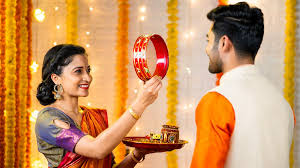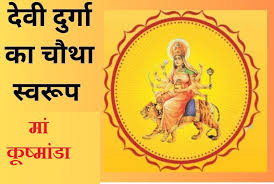Karwa Chauth 2025: Timings, Rituals, and Significance Explained
Karva Chauth is one of the most favorite festivals among married Hindu women, symbolizing the love, devotion and sacred bond between husband and wife. Every year, women across India observe a one-day fast for the well-being, longevity and prosperity of their husbands. This festival falls on the fourth day of the full moon in the Hindu month of Kartik. Karva Chauth in 2025 will be celebrated on Saturday, 11 October 2025.
The festival is especially popular in the northern and north-western regions of India such as Punjab, Haryana, Delhi, Uttar Pradesh, Rajasthan and Madhya Pradesh. Although its essence is the same, traditions and customs may differ slightly in different regions.
Karva Chauth 2025: Date and puja timings
According to the Hindu calendar, Karva Chauth 2025 is on 11 October (Saturday). The Muhurat of Karva Chauth puja will start during the moonrise (moonrise) period after sunset in the evening, when women break their fast after offering Arghya to the moon and their husbands.
Key Timings (Tentative):
- Karwa Chauth Date: Saturday, October 11, 2025
- Fasting Begins (Sargi time): Around 4:45 AM – 5:10 AM (before sunrise)
- Puja Muhurat: 5:45 PM – 7:00 PM
- Moonrise Time: 8:15 PM (approximately)
- Fasting Ends: After sighting the moon and completing rituals
Rituals and Traditions
Karwa Chauth begins before sunrise and continues until moonrise. The rituals observed throughout the day carry deep emotional and cultural significance.
- Sargi: The Pre-Dawn Meal
The day starts early in the morning, before sunrise, with Sargi, a special meal prepared by the mother-in-law for her daughter-in-law. It typically includes fruits, sweets, dry fruits, paratha, and coconut water. Consuming Sargi is considered auspicious and gives strength to women to observe the day-long fast.
Women eat Sargi before sunrise and refrain from consuming any food or water until the moon appears at night. The act of receiving and eating Sargi also symbolizes the bond of love between the mother-in-law and the daughter-in-law.
- Nirjala Vrat: The Day-long Fast
The most significant part of Karwa Chauth is the Nirjala Vrat, where women observe a strict fast without eating or drinking water throughout the day. It is believed that this act of devotion and endurance strengthens the marital bond and brings blessings for the husband’s long life.
Throughout the day, women engage in prayers, apply henna (mehndi), and spend time dressing up in traditional attire. Many also gather together in the afternoon to participate in Karwa Chauth Katha, where they listen to stories of devotion and faith associated with the festival.
- Karwa Chauth Puja
The evening puja holds special importance. Women gather in groups, dressed in bright sarees or lehengas, adorned with jewelry, bangles, and vermilion (sindoor). They arrange the Karwa (earthen pot) filled with water, decorated with sacred symbols, and place idols or pictures of Goddess Parvati and Lord Shiva on a plate.
During the puja, women rotate their thalis (plates) in a circle while chanting prayers, seeking blessings for their husband’s long life and prosperity. The Karwa Chauth Katha (story) is recited, narrating the legend of Queen Veeravati, whose devotion and fasting saved her husband’s life.
- Moonrise and Breaking the Fast
Once the moon is sighted, women view it through a sieve or a dupatta, offer water (Arghya) and prayers to the moon, and then look at their husbands through the same sieve. This symbolic act reflects devotion and the belief that the moon’s blessings ensure the husband’s longevity.
After this ritual, the husband offers water or the first morsel of food to his wife, marking the end of the fast. Families then come together for a festive dinner filled with traditional dishes and sweets like kheer, halwa, and puri.
Significance of Karwa Chauth
Karva Chauth is beyond a religious ritual – it is a celebration of marital harmony, commitment and love. The word “Karva” refers to an earthen pot used during rituals, symbolizing peace and prosperity, while “Chauth” means the fourth day of the lunar month.
spiritual and cultural meaning
This fast is dedicated to Goddess Parvati, who represents eternal love and devotion. According to Hindu mythology, Parvati’s intense penance gained Lord Shiva as her husband, and thus, women pray to him for equal marital bliss and protection.
Fasting without food or water is seen as a form of self-discipline and renunciation, representing a woman’s unwavering faith in the divine power and her prayers for the well-being of her husband.
modern perspective
While Karva Chauth has deep traditional roots, in modern times, the festival has evolved. Today, it is not limited to just women. Many husbands also keep the fast to express their love and equality in marriage. This festival has become a symbol of mutual respect and an emotional bond between the partners.
Karva Chauth also plays an important social role. It brings families and communities together, strengthening ties between relatives and neighbours. Women gather for mehendi sessions, puja ceremonies and festive dinners, making it a delightful cultural event.
Popular Beliefs and Legends
Several legends surround Karwa Chauth, adding depth to its significance:
- Legend of Queen Veeravati: The most popular story tells of Queen Veeravati, whose devotion and fasting for her husband’s life brought him back from death, symbolizing the power of faith and love.
- Story of Karwa: Another legend speaks of a devoted wife named Karwa, who prayed to Yama (the god of death) to restore her husband’s life, impressing the gods with her devotion.
- Mahabharata Reference: It is said that Draupadi observed Karwa Chauth for Arjuna’s safety during his exile, showcasing the festival’s ancient significance.
Conclusion
Karwa Chauth 2025, falling on October 11, will once again witness countless women across India observing the sacred fast with faith, love, and joy. Beyond the rituals and traditions, the festival represents timeless values of devotion, trust, and togetherness in marriage.
As the moon graces the night sky, it will illuminate the smiles of countless couples, reflecting the enduring beauty of this ancient Indian celebration — where love shines brighter than the moon itself.












